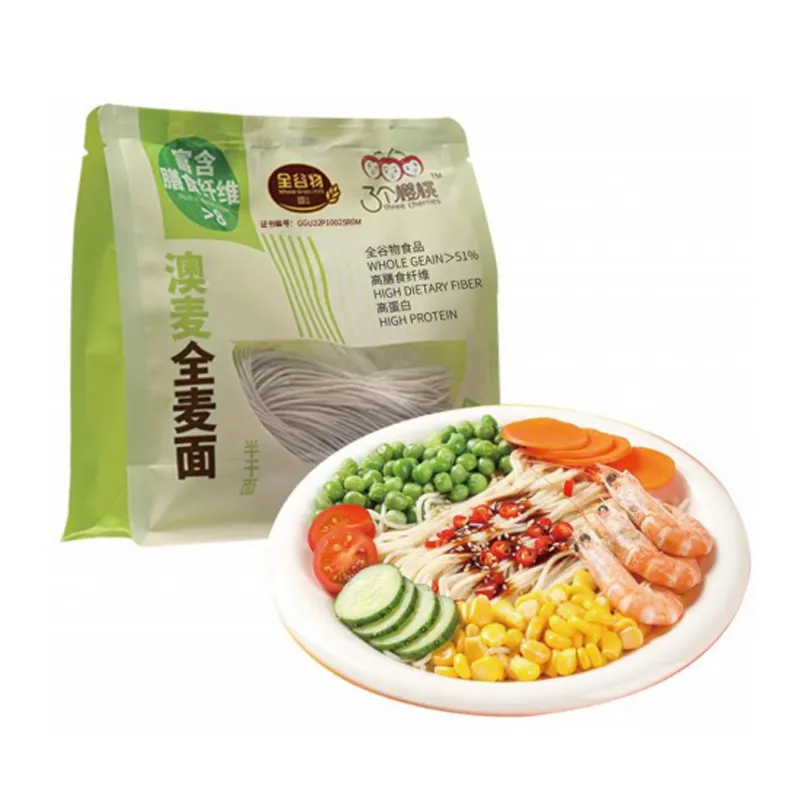Tips for Softening Whole Wheat Pasta for a Better Texture
How to Make Whole Wheat Pasta Softer Tips and Tricks
Whole wheat pasta is a healthier alternative to traditional white pasta, packed with nutrients and fiber. However, one common complaint among those who make or consume whole wheat pasta is its texture. At times, it can be firmer and chewier than its white counterpart, which might not appeal to everyone. If you're seeking ways to make your whole wheat pasta softer without sacrificing its nutritional benefits, you've come to the right place. In this article, we'll explore effective strategies to achieve softer whole wheat pasta.
1. Choose the Right Flour
The quality of the whole wheat flour you select is essential in determining the texture of your pasta. Not all whole wheat flours are created equal; some contain more bran and germ, which can lead to a denser pasta. When selecting flour, opt for finely ground whole wheat flour or even a blend that includes some all-purpose flour. This balance can yield a softer texture while still providing the nutritional benefits of whole grains.
2. Adjust the Water Ratio
One of the critical factors in making softer pasta lies in the hydration. Whole wheat flour absorbs more water than white flour, so it's essential to adjust the water ratio accordingly. Start by adding more water than you typically would for white flour pasta. A general rule of thumb is to use about 1/4 cup more water for each cup of whole wheat flour. The dough should be slightly sticky but manageable. Allow the dough to rest for about 30 minutes after mixing; this resting period helps the flour absorb the water and become less tough.
3. Incorporate Fat or Eggs
Another effective way to create softer whole wheat pasta is to add fat or eggs to your dough. Including a tablespoon of olive oil or melted butter can enrich the pasta's flavor and improve its texture. If you're willing to incorporate eggs, using one or two eggs in your dough can result in a more tender pasta. The protein in the eggs adds richness while enhancing the overall mouthfeel of the final product.
Kneading is crucial when making pasta, and using the right technique can significantly affect the final texture. When kneading your whole wheat pasta dough, be gentle. Over-kneading can lead to a tougher product. Instead, knead just until the dough comes together and is smooth. A good practice is to knead the dough for about 8-10 minutes, allowing it to develop gluten without becoming overly elastic.
how to make whole wheat pasta softer

5. Use the Right Cooking Method
Cooking methods play a vital role in the texture of your finished pasta. When boiling whole wheat pasta, make sure to use a large pot of salted water. Salt not only enhances flavor but can also help the pasta cook more evenly. Bring the water to a robust boil before adding the pasta, and stir immediately to prevent sticking.
Whole wheat pasta usually requires a few additional minutes in the boiling water compared to white pasta. However, the key to achieving the desired softness is to taste the pasta a minute or two before the recommended cooking time is up. When it reaches al dente, remove it from the heat; overcooking can lead to an undesirable texture.
6. Rinse and Serve Promptly
After cooking, rinse the pasta briefly under cold water to stop the cooking process. This step is particularly important if you're tossing the pasta with a sauce. When you're ready to serve, add the sauce while the pasta is still warm, allowing it to absorb the flavors and moisture, which can help soften it further.
7. Storage Considerations
If you’re preparing pasta ahead of time, consider how you store it. Whole wheat pasta can dry out if left exposed for too long. Store it in a covered container or toss it with a bit of olive oil to keep it moist before refrigeration. When reheating, add a splash of water or sauce to ensure it doesn’t dry out.
Conclusion
Making whole wheat pasta softer is likely achievable with the right techniques and ingredients. By selecting the right flour, adjusting the hydration, adding fats or eggs, kneading gently, and choosing appropriate cooking methods, you can enjoy a tender and delicious whole wheat pasta that doesn’t compromise on flavor or health. With practice and experimentation, you’ll discover the perfect balance for your own culinary style. Happy cooking!
-
The World of Homemade PastaNewsApr.27,2025
-
The World of Fresh PastaNewsApr.27,2025
-
Spaghetti Bolognese: A Classic DelightNewsApr.27,2025
-
Soba vs. Udon: A Noodle ShowdownNewsApr.27,2025
-
Sichuan Cold Noodles DelightsNewsApr.27,2025
-
Cold Noodles DelightNewsApr.27,2025
-
The World of Udon Noodles: Delicious and Nutritious ChoicesNewsApr.16,2025
Browse qua the following product new the we

















































































































